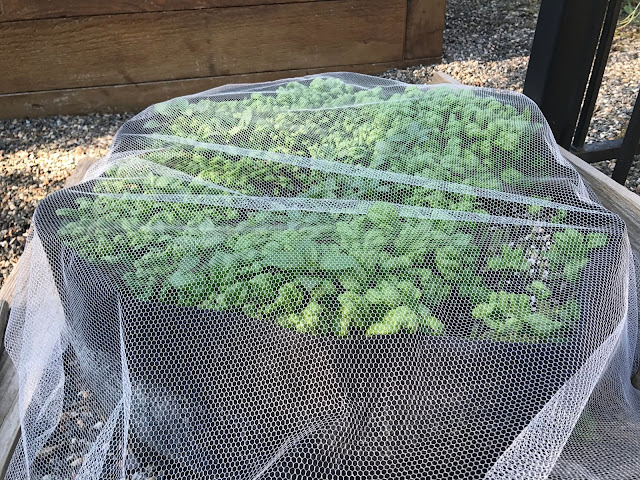The Summer 4-Step Plan of Action-
First, as difficult as it may seem - wrap your head around the fact that Japanese beetle management is ongoing from first sighting on your favorite plant (s) to sometime in the fall when their numbers wane. There is no one fix all/kill all application for adult beetles and their egg-larvae offspring (both stages can be treated). Well there is one fix all but that would require moving to Alaska or the Caribbean.
Second, determine if and how you'll remove or manage the adult beetles all summer as they keep coming and coming and coming - just like the mail.
Third, determine if and how you'll treat your turf where they lay their eggs - you know, the next generation - 2020 beetles.
Four, act on your plan.
The good news for determining two through four is that Dr. Whitney Cranshaw, Colorado State University entomologist extraordinaire has written a very informative and helpful fact sheet on the Japanese beetle. Find it HERE.
I suggest printing the document and reading it carefully. Pay attention to the Japanese beetle life cycle (one year) and understand that effective management involves dealing with both adult beetles and their offspring (larvae, also called white grubs). Adult beetles feed on foliage, flowers and fruit while their offspring - white grubs feed on grass roots. Both stages damage plants and roots.
Dr. Cranshaw includes excellent management recommendations for both life stages. Circle the ones that make the most sense to you based on your time and pocketbook. Some products are pricey if you choose to use them regularly all summer into fall.
Dr. Cranshaw has helped us tremendously with control details on the fact sheet by listing common names for products, trade names, persistence tips, whether the product is okay for use on food crops and the ever important pollinator hazard information.
Action - You may opt to do nothing - no management. Trust me, you'll incessantly complain about the out of control J. beetles to anyone who comes within ear shot. Eventually they will ask you to please stop whining and suggest that move. Maybe they will pack your bags.
The most rewarding and immediate control method is to flick adults into soapy water in the morning or evening when they are sluggish and easy to flick. Keeping the numbers down actually reduces more beetles from joining the eating party on your plants. What attracts them to the plants is the plant oils released by beetle chewing (called aggregation feeding), so less beetle chewing means less beetle visits. The research on Japanese beetles says that it is fine to squish or pinch adults on the spot. Their smushed parts do not attract more beetles to the area - it's the chewed plant oils that put out the welcome sign.
I know retired people who flick beetles on their infested plants twice a day. I don't think they are available for hire. If they were, their business card might read something like this -
Japanese Beetle Removal - The Number One Firm in Flicking
"We flick so you don't have to"
Click - Japanese Beetle Management Colorado
 |
| Inexpensive bridal tulle from fabric store over basil plants growing in Smart Pot to prevent JB eating - works great! |

I just want to say thank you so much for this! I have been reading everything I can, and I really appreciate your JB pages and fact sheets.
ReplyDelete